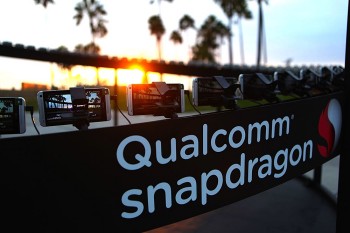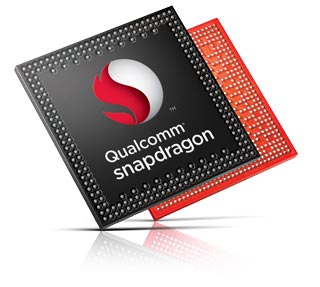
Qualcomm announces next-gen Snapdragon 810 and 808 64-bit chipsets
The Snapdragon 801 chipset has enjoyed its 15 minutes of fame, but a new wild pair of cowboys are riding into town soon. Qualcomm has announced the next generation of Snapdragon 800 processors, with both the Snapdragon 810 and Snapdragon 808 being brought into the light this morning. What kind of horsepower will they provide? Why, we never thought you’d ask!
The Snapdragon 810 is being billed as their most powerful processor yet. One of the reasons is due to the Adreno 430 GPU on-board, which is said to be 30% faster graphics performance than the 420 found in the Snapdragon 805 (which hasn’t come to market in many smartphones or tablets as of yet).
Adreno 430 also provides 100% faster GPGPU performance while sucking battery a rate of 20% less. The Snapdragon 810 is also second processor Qualcomm has made with built-in 64-bit computing, something only the mid-range Snapdragon 410 enjoyed to this point. Beyond that, it has a set of both quad-core Cortex-A57 and quad-core Cortex-A53 cores.
An integrated, carrier-aggregated LTE modem makes it easy to make one device for ALL the airwaves, and support for OpenGL ES 3.1, 4K support over HDMI 1.4, 4K embedded display support, up to a 55 megapixel camera sensor, LPDDR4 memory, Bluetooth 4.1, USB 3.0, WiFi ac MIMO and more gives OEMs everything they need to create the devices they want.
The Snapdragon 808 is a bit less beefy, with an Adreno 418 GPU that’s about 20% faster in graphics performance than the Adreno 330 (which is what’s found in Snapdragon 801 devices such as the Samsung Galaxy S5 and HTC One M8). It only has two Cortex-A57 cores to go along with the set of quad-core Cortex-A53. Snapdragon 808 can support embedded displays up to 2560 x 1600, and can push 4K video to an external display over HDMI 1.4. It also only supports LPDDR3 memory. Otherwise, the 808 enjoys much of the same features that the Snapdragon 810 does.
And that’s about it as far as major differences go. Both chipsets support 64-bit computing, though that won’t matter much for Android until Google gets their feet moving on a 64-bit OS. Still, it’s nice to know that all of Qualcomm’s latest processors will be future-proofed for whenever that eventually happens.
We’ll need to await more technical details about these two pieces of silicon before we know just how significant of a bump they are over today’s offerings, but early claims by Qualcomm have us excited to see these shoved into a device near you at some point in the future.
Worried that your shiny new Snapdragon 801-based device has been upended? Don’t be. We likely won’t be finagling any devices with these chipsets for ourselves before the year closes, as Qualcomm won’t begin sampling the chipsets until the second half of this year (which means we should expect first devices to land in the first half of 2015).

